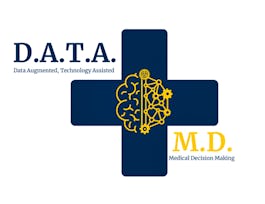COURSE 4 of 7. This course is designed to help you build high-level knowledge of the current medical coding and payment mechanisms of most U.S. healthcare services, referred to as fee-for-service. You will explore why the fee-for-service model has contributed to higher costs in the U.S. healthcare system without clearly improving health outcomes. You will examine the importance of coding to reflect chronic conditions and other diagnoses accurately and how value-based care and payments utilize these measures and data. As you learn about a model to replace fee-for-service, you’ll encounter a range of payment options considered to be value-based that utilize a framework from the Health Care Payment Learning and Action Network (HCP-LAN). To build on those options, you will learn how risk-adjustment, quality scores, and patient satisfaction measures are critical parts of value-based care and payment contracts. In the summative assignment, you will demonstrate your knowledge by comparing fee-for-service and value-based contracts, using specific examples to explain and justify the importance of documentation and coding, and identifying ways that risk-adjustment and patient satisfaction are incorporated into value-based care contracts.



Value-Based Care: Reimbursement Models
This course is part of Value-Based Care Specialization


Instructors: Susie Gronseth
Sponsored by Taipei Medical University [C4CB]
4,288 already enrolled
(45 reviews)
Recommended experience
What you'll learn
Explain fee-for-service medical coding and payment mechanisms and why fee-for-service leads to higher costs without clearly improving outcomes.
Describe the range of value-based payment options from the HCP-LAN Alternative Payment Model framework.
Describe the importance of risk adjustment, quality scores, and patient satisfaction measures in value-based care contracts.
Skills you'll gain
- Health Information Management and Medical Records
- Health Care
- Governance Risk Management and Compliance
- Risk Management
- Enterprise Risk Management (ERM)
- Revenue Cycle Management
- Medicare
- Healthcare Industry Knowledge
- Billing
- Risk Control
- Health Administration
- Accounts Receivable
- Medical Management
- Billing Systems
- Health Care Administration
- Health Care Procedure and Regulation
- Billing & Invoicing
Details to know

Add to your LinkedIn profile
2 assignments
See how employees at top companies are mastering in-demand skills

Build your subject-matter expertise
- Learn new concepts from industry experts
- Gain a foundational understanding of a subject or tool
- Develop job-relevant skills with hands-on projects
- Earn a shareable career certificate


Earn a career certificate
Add this credential to your LinkedIn profile, resume, or CV
Share it on social media and in your performance review

There are 3 modules in this course
In this course, you will build high-level knowledge of the current medical coding and payment mechanisms of most U.S. healthcare services, referred to as fee-for-service. Then you will explore why the fee-for-service model has contributed to higher costs in the U.S. healthcare system without clearly improving health outcomes. As you examine a model to replace fee-for-service, you’ll encounter a range of payment options considered to be value-based. To build on those options, you will explore how risk-adjustment, quality scores, and patient satisfaction measures are critical parts of value-based care and payment contracts. This module is an introduction to and exploration of value-based payment models utilizing a framework from the Health Care Payment Learning and Action Network (HCP-LAN). As a preparatory step to that introduction and review, the module starts with a high-level review of current fee-for-service payments, coding for those payments, and the problems resulting in increased healthcare costs and lower-than-expected quality in the U.S. Remember, as you read or hear terms or concepts that are new to you, have your digital (Word doc) or analog (paper) notepad handy to write them down. At any time, you can use your favorite search engine to learn more. Be a self-directed learner!
What's included
10 videos2 readings1 assignment1 discussion prompt1 plugin
In the previous module, you examined the importance of coding to reflect chronic conditions and other diagnoses accurately. You also explored how value-based care and payments utilize these measures and data. As you explore the four categories of the HCP-LAN alternative payment models (APMs)—also known as value-based payment arrangements or value-based contracts – the acronym of the latter is also VBC. As with other acronyms, you will learn to read VBC in context to determine if we are talking about care or payments/contracts. The focus of this module is on two key aspects of value-based payment models: 1) The need for, and methods of, risk-adjustment in value-based contracts, and 2) Quality scores and patient satisfaction measures, which are critical parts of value-based care and contracts. At the end of this module, you will examine how those elements are utilized in value-based contracts. Remember, as you read or hear terms or concepts that are new to you, have your digital (Word doc) or analog (paper) notepad handy to write them down. At any time, you can use your favorite search engine to learn more. Be a self-directed learner!
What's included
11 videos1 reading1 assignment1 discussion prompt
In this course, you have examined how the fee-for-service model emerged from current medical coding and payment mechanisms and why this model has contributed to higher costs in the U.S. healthcare system. In the videos and discussion postings relating the quest to replace the fee-for-service model, you explored a range of value-based payment options and how risk-adjustment, quality scores, and patient satisfaction measures are critical parts of value-based care and payment contracts. Whether you are currently working in a healthcare provider or payer organization or aspiring to work in either, it is paramount that you be able to synthesize, reframe, and put into practice knowledge gained from this course. Even more important is to recognize that the responsibility for applying this knowledge is shared by providers and payers, as ultimately it is the provider-payer partnership that leads to successful value-based care.
What's included
1 peer review1 plugin
Instructors

Offered by
Why people choose Coursera for their career




Learner reviews
45 reviews
- 5 stars
57.77%
- 4 stars
31.11%
- 3 stars
6.66%
- 2 stars
2.22%
- 1 star
2.22%
Showing 3 of 45
Reviewed on Jun 15, 2022
Its an excellent course with a lot of insights on how to develop models of reimbursement. Its very specific to the US however, and examples from other countries would be useful.
Recommended if you're interested in Health

Johns Hopkins University

Stanford University

University of Michigan

Stanford University

Open new doors with Coursera Plus
Unlimited access to 10,000+ world-class courses, hands-on projects, and job-ready certificate programs - all included in your subscription
Advance your career with an online degree
Earn a degree from world-class universities - 100% online
Join over 3,400 global companies that choose Coursera for Business
Upskill your employees to excel in the digital economy

